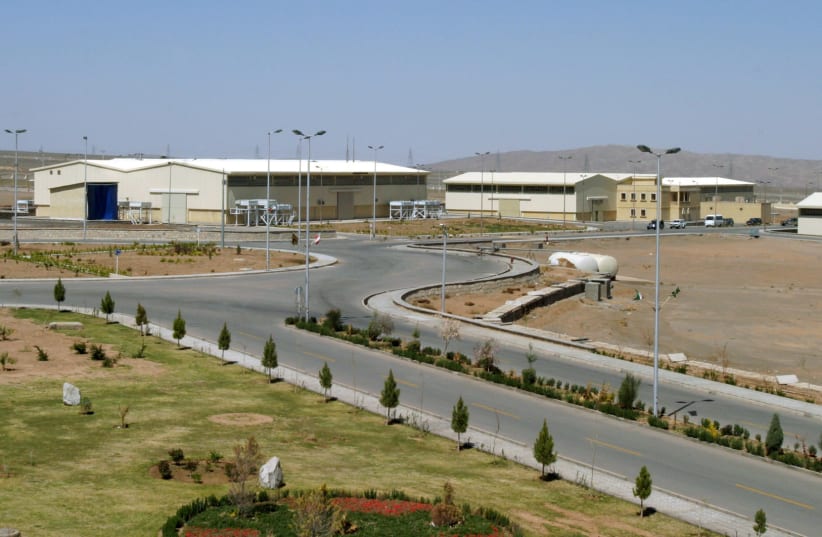The UN nuclear watchdog is in discussions with Iran on the origin of uranium particles enriched to up to 83.7% purity, very close to weapons grade, at its Fordow enrichment plant, a report by the watchdog seen by Reuters confirmed on Tuesday.
Diplomats said last week that the agency had found the traces at the Fordow Fuel Enrichment Plant (FFEP), where Iran is enriching uranium to up to 60% purity. Weapons grade is around 90%. While spikes in enrichment levels can occur and this could have been accidental, this spike is relatively large.
The traces were found in the product from the two interconnected cascades, or clusters, of advanced centrifuges at Fordow that are enriching to up to 60%. The International Atomic Energy Agency chided Iran in an earlier report for making substantial changes to those cascades without informing it.
"Regarding the origin of the particles enriched above 60% U-235, identified after the implementation of the new cascade configuration at FFEP, discussions with Iran are still continuing," the confidential IAEA report to member states said.
"Iran informed the Agency that 'unintended fluctuations in enrichment levels may have occurred during transition period at the time of commissioning the process of [60%] product (November 2022) or while replacing the feed cylinder'," it added.
What else did the report say?
The report also said Iran's stock of uranium enriched to up to 60%, which is being produced at two sites, had grown by 25.2 kg to 87.5 kg since the last quarterly report. The total stockpile of uranium enriched to that and lower levels is estimated at 3,760.8 kg, the report said.
According to IAEA terminology, around 42 kg of uranium enriched to 60% purity is a "significant quantity," defined as "the approximate amount of nuclear material for which the possibility of manufacturing a nuclear explosive device cannot be excluded."
A senior diplomat cautioned, however, that in practice it would take more than 55 kg of uranium enriched to 60% to make one bomb because some material is wasted during enrichment.
Iran denies ever having sought nuclear weapons and says it only wants to master nuclear technology for civil uses.
A second quarterly report on a years-long investigation into uranium traces found at three undeclared sites in Iran, which is also due before next week's meeting of the IAEA's 35-nation Board of Governors, will not be issued until later in the week, diplomats said.
